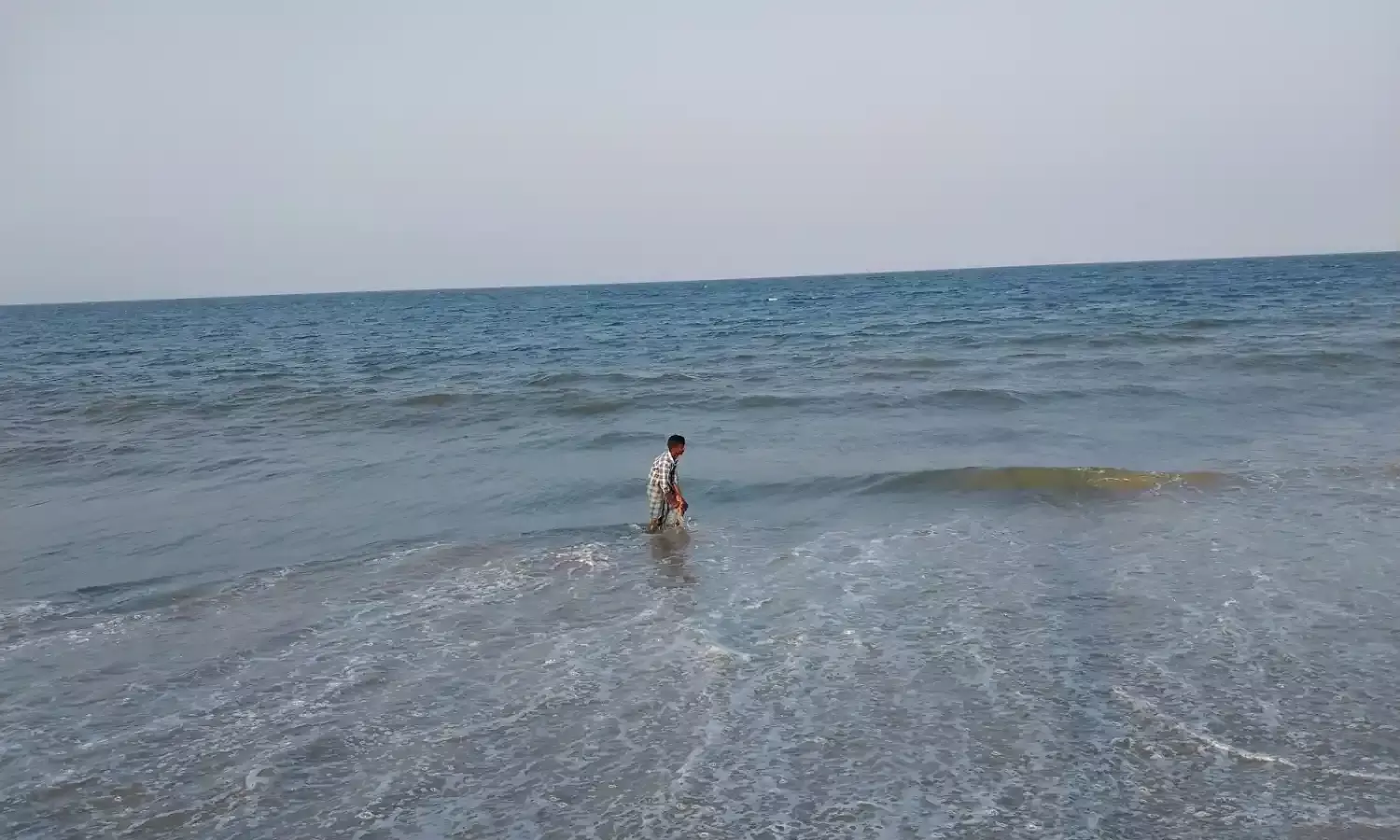The Sea And Her People
Coastal communities do their best to protect the fragile mangroves

Despite a lean body, 32-year-old Koduru Yedukondalu displayed surprising strength. On an afternoon, with the sun rays lighting up the river in gold near his fishing village, the man pushed his boat with three people aboard.
Yedukondalu was excited to have visitors, the reporter and her guide Savva Sravani, and the latter’s local friend. Sravani works for Dr Reddy’s Foundation, a non-profit based in Hyderabad. The organisation works on coastal ecosystems and regenerative agriculture.
Yedukondalu braved the waves of the Swarnamukhi river, which ultimately joins the Bay of Bengal in Andhra Pradesh. With the boat steady on the brackish water, he was excited to show around the place dotted with several islands where mangroves thrive. With a keen interest in the environment, he has worked with the forest department and M. S. Swaminathan Research Foundation.
An island with dense vegetation was visible, but it had to wait for the time being. There was another exciting activity. A fisherman out on a yellow boat.
“He is looking for mud crabs in the water. I will take my boat closer,” Yedukondalu said. At the same time, a flight of birds brought out excited exclamations from all.
A resident of Kondurupalem village in Andhra’s Tirupati district, Yedukondalu knows how important mangroves are for coastal communities. He planted mangrove saplings on an island on July 26. It was the International Day for Conservation of Mangrove Ecosystems.
Kondurupalem has a population of about 700. The village has a primary school but for healthcare facilities the residents travel 12 km. “There are 210 families living here and all of them depend on fishing and mud crab collection for livelihood.”
Fish is sold in the nearby villages and also sent to Chennai, but the fishermen do not get a steady income every month. “Sometimes, some of us earn Rs 5,000 in a day and at times there is nothing,” he said.
There is a ban period of two months usually. This year, it lasted from April 15 to June 14. Fishing is an intense activity here for six months. During the monsoon, the waves are high.
On many days, the fishermen cannot venture out. To make additional income, Yedukondalu carries out electrical wiring work. It has reduced his dependency on fishing.
Near the shore, colourful wooden fishing boats could be seen. The boats are purchased from Marakkanam on the East Coast Road which is close to Pondicherry and arrive on lorries.
Back in the water, excitement was intense after the fisherman in the yellow boat displayed his catch: a mud crab which is found in mangroves and estuaries. “It does not smell. You can hold it,” he told the reporter as she jumped into his boat from that of Yedukondalu’s.
After a considerable time elapsed in showing around, Yedukondalu’s boat reached an island with sandy soil and various tree species. Of these, the tiny fruits of a thorny tree are edible.
The blue sea came into view. Yedukondalu ran towards it while the reporter followed. He pointed out a big fishing boat far away.
The next day back at Yedukondalu’s home where his wife Anuradha cooked delicious mud crab curry for lunch, the former narrated how people in the village lost their nets and boats when the Tsunami came in 2004. At that time, many people worked in nearby shrimp farms for livelihood.
Yedukondalu is not afraid of the sea. He knows how to swim in it. It is a living presence in his life. He goes out to it almost every day. “When fishermen go out for fishing, they listen to weather forecasts. That is for safety. But we all can tell by looking at the waves.”
Andhra Pradesh has a coastline length of 975 km. India’s coastline stretches for 7516.6 km which is vulnerable to climate change impacts.
Yedukondalu and his wife care for the mangrove vegetation. They know it would protect the village from storms and tidal surges. The mangrove ecosystem will also yield delicious mud crabs.
All Photographs by DEEPANWITA GITA YOGI



